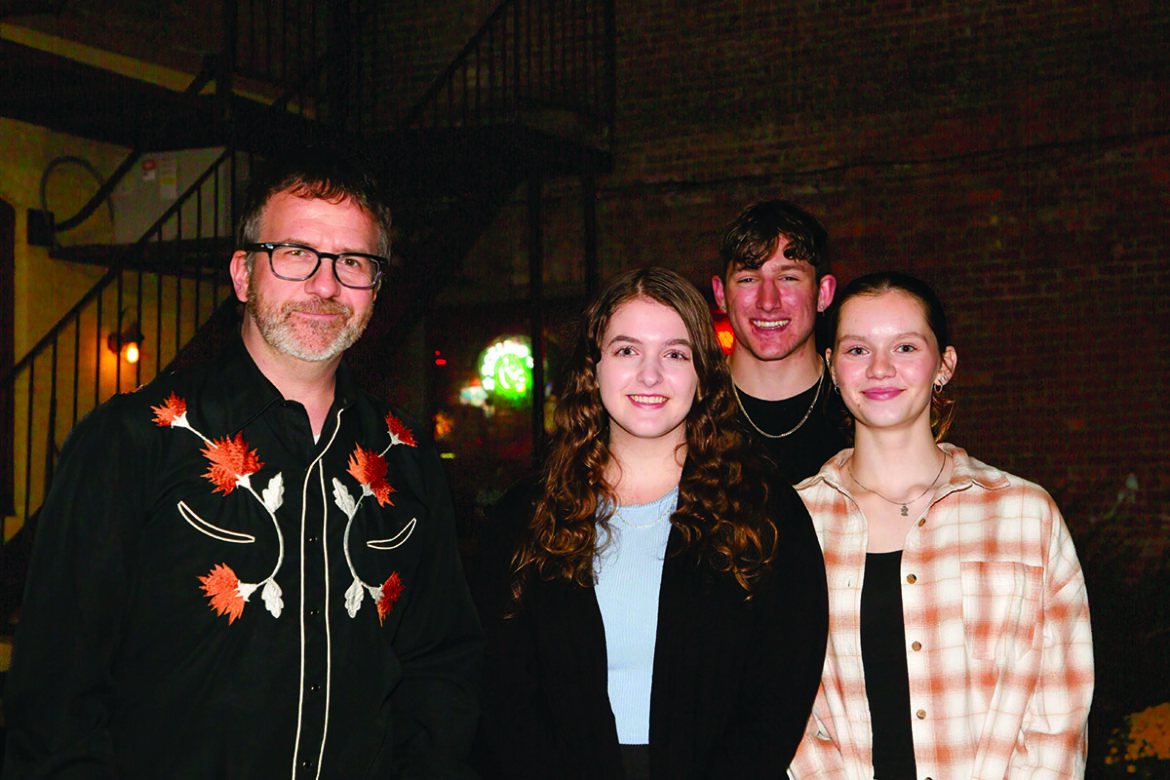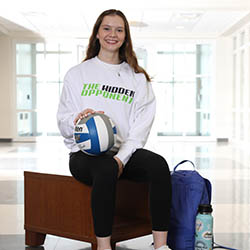

The Science of Knowing What’s One Too Many
By Mike Barone
William Kowalczyk has always been fascinated by people’s behaviors relating to substance use – and abuse.
His experience includes work at the National Institute on Drug Abuse in Baltimore. There he researched medications for treating opioid dependence; mHealth (mobile health) applications for substance use; and the relationship between the physical environment and opioid use disorder.
When he joined Hartwick’s faculty in the fall of 2017 as assistant professor of psychology, it was this last topic that had him most excited. He was, after all, joining a relatively rural college town community with a sizable population of young people and a “healthy” nightlife.
To be clear, Kowalczyk isn’t Puritanical or naïve. He isn’t interested in finger wagging or shaming today’s young adults in an alcohol-is-the-devil pulpit rant. Instead, he’s looking to find tipping points when people who are drinking might be more likely to do something they’d regret.
Kowalczyk is exploring binge drinking, scientifically defined as four or more drinks in two hours for women, and five or more for men. More specifically, he’s investigating planned vs. unplanned binge drinking, and whether particular stressors make a person more likely to have a binge drinking episode. He’s also studying how excessive drinking influences people’s view of others in an environment – including how one’s attraction for others changes as their drinking progresses, a phenomenon known far and wide as “beer goggles.”
“Young adults drink. We’re not going to stop that,” asserted Kowalczyk. “I just want to help lessen the negative consequences when they do.”
This realistic standpoint has become his calling card, and it’s quickly established his credibility across the student body, including the dozen or so undergraduates who have done research in his lab since he arrived.
Moreover, these aren’t just any students. They are some of Hartwick’s most accomplished.
Take Madison Corso, ’22, who graduated in just three years with a psychology major and biology minor. She began a master’s program at Drexel University this fall – which she chose over an offer from Columbia University. The South Glens Falls, N.Y., native hopes to one day earn her Ph.D.
Corso was extremely active on campus, serving on the boards of the Psychology Club, along with Hartwick’s chapters of the National Society of Leadership and Success and Psi Chi honor society. She was also a member of Hartwick’s Honors Program and the Sociology and Criminal Justice Club. Last year she earned the prestigious John Christopher Hartwick scholarship – the highest distinction the college confers, given to just six students per year.
“Three of us were in Dr. Kowalczyk’s lab,” she marveled. “It was unheard of!”
Then there’s Dylan Dwyer, a sophomore from Central Valley, N.Y., pursuing a double major in psychology and biology. He was thrilled to discover he could gain research experience immediately as a first-year student. As a tight end on Hartwick’s football team, it also helped that the data gathering occurred in the evenings.
Corso and Dwyer were drawn to the study, knowing they would be an important facet to its success. Kowalczyk learned quickly that a man in his mid-40s in a bar by himself trying to recruit 20-somethings to share their thoughts raised a few red flags – with students and bar owners.
“Our students have much more success engaging and recruiting participants, because they’re peers,” Kowalczyk explained. “They immediately put other students at ease.”
That comfort level is critical because it turns the conversation into something light, irreverent and fun.
“We’d set up a table at an event and ask people, ‘Hey, do you want to get paid for drinking alcohol?’” Corso laughed.
At bars, people were even more receptive. When given the chance to share their blood alcohol content using the team’s breathalyzers, people flocked to the opportunity. Knowing they wouldn’t be driving from Water Street’s walkable, two-campus social hub, patrons felt it was fun. They saw it as self-effacing humor, similar to how they react when playing with Snapchat filters – the modern-day funhouse mirror.
“It was entertaining for everybody,” agreed Dwyer, who hopes to one day attend medical school. “When you’re at a bar, it’s unexpected to be approached by a fellow student and asked to help with a research project. It was nice to see people excited to participate and contribute.”
Corso and Dwyer are not alone in their appreciation for Kowalczyk, who was chosen as the Student Government’s Outstanding Advisor this past spring. He’s created a culture that particularly resonates with student researchers.
“I’m the drugs and sex professor. Who doesn’t want to study that?” Kowalczyk joked.
But he’s quick to underscore the importance and seriousness of this work, which could literally help people avoid mistakes that could last a lifetime – or worse yet, end one.
The binge drinking study’s findings offer insights on a variety of behaviors, including some changing trends. For example, women were more likely to report blacking out while drinking than men.
“That’s much different than it was 10 years ago,” Kowalczyk said, “and it clearly raises safety concerns.”
Then there’s the data surrounding binge drinking and its relation to a person’s stress levels. The team’s data suggests somewhat of a standard bell curve, with those in the middle having the greatest concerns.
“If you think about it, that makes sense,” Kowalczyk reported. “People who don’t drink much likely don’t have a lot of stress. And people who drink a lot also have low stress, because they’re always partying and not as concerned with academics. It’s the people in the middle – those trying to balance academics and partying – that typically have the most stress. In other words, trying to have it all is stressful.”
Then there are those “beer goggle” studies – or as he terms it, The Closing Time Effect, where the later it gets, the more attractive people appear. Findings thus far have shown both biological and economic components at play.
“Certainly, there’s an inherent desire for young, single people to hook up,” he described. “But as the evening progresses and people begin to pair off and leave, there’s a resulting scarcity which causes people to consciously – or more likely, subconsciously – lower their standards.”
As important as the work is to Kowalczyk, he also wants his lab to be a great place for students to springboard into a career. That means his lab has to be known for its quality and rigor.
“It’s all fun and games until I dump a ton of work on you,” he warned.
His students wouldn’t have it any other way. Although the work is fun and relatable, they know it’s being done at a high level. The binge drinking data has already resulted in a half-dozen research posters which students have presented at Eastern Psychological Association annual meetings. Corso was among those presenters, which she says was key to getting into those competitive graduate schools.
Corso also credits Kowalczyk’s willingness to listen to students’ ideas for their own research interests, which in her case includes food addiction habits and eating disorders.
“For my thesis I wanted to look at, if people unintentionally missed a meal, would they intentionally start to skip that same meal (going forward)?” she explained. “He originally turned the idea down, but he eventually accepted it and then loved the project.”
Corso capped her Hartwick career with an even bigger milestone. In her senior year she enrolled in Kowalczyk’s “Research in Psychology” class. It explored the mental health effects of media coverage of events like mass shootings and the recent Roe vs. Wade debate. She and her team created a poster from their investigation and presented the data this past August at the American Psychological Association’s annual conference in Washington, D.C. They were among 30-some posters competing in their division (Clinical Psychology), which included numerous Tier-I research institutions.
They beat them all.
“It was an amazing, wonderful experience – and I was only able to attend because Kowalczyk provided me with the travel funds,” Corso shared.
Dwyer also feels fortunate to have gained hands-on research and analytical experience so early in his career – but he knows many peers who have been given similar opportunities.
“The attitude toward research here at Hartwick is really strong,” he said. “It’s ingrained in the (faculty’s) culture. They’re here to feed hungry minds.”
And if William Kowalczyk is successful, that hunger might inspire more people to choose a late-night bite on Water Street over a beverage when the words, “Last call!” are heard.



